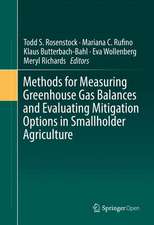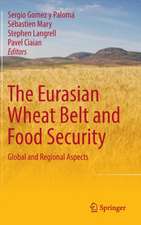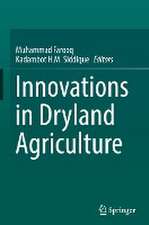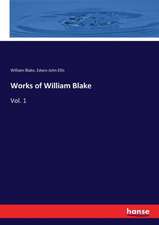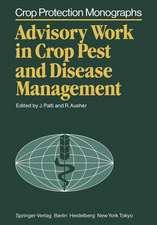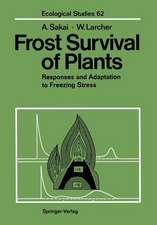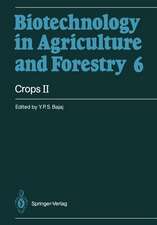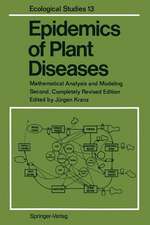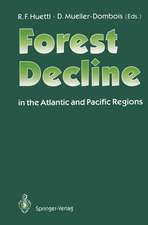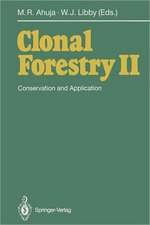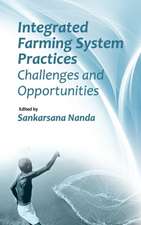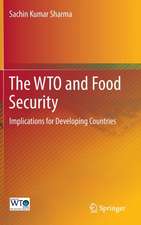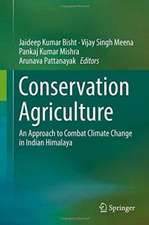Assessing Recent Soil Erosion Rates through the Use of Beryllium-7 (Be-7)
Editat de Lionel Mabit, William Blakeen Limba Engleză Hardback – 4 mar 2019
This open access book is the first comprehensive guideline for the beryllium-7 (Be-7) technique that can be applied to evaluate short-term patterns and budgets of soil redistribution in agricultural landscapes. While covering the fundamental and basic concepts of the approach, this book distinguishes itself from other publications by offering step-by-step instructions on how to use this isotopic technique effectively. It covers experimental design considerations and clear instruction is given on data processing. As accurate laboratory measurement is crucial to ensure successful use of Be-7 to investigate soil erosion, a full chapter is devoted to its specific determination by gamma spectrometry. This open access contribution further describes new developments in the Be-7 technique and includes a concluding chapter highlighting its potential benefits to support the implementation of area-wide soil conservation policy.
Preț: 415.95 lei
Nou
Puncte Express: 624
Preț estimativ în valută:
79.59€ • 83.31$ • 66.25£
79.59€ • 83.31$ • 66.25£
Carte tipărită la comandă
Livrare economică 31 martie-14 aprilie
Preluare comenzi: 021 569.72.76
Specificații
ISBN-13: 9783030109813
ISBN-10: 303010981X
Pagini: 73
Ilustrații: VII, 69 p. 26 illus., 7 illus. in color.
Dimensiuni: 155 x 235 mm
Greutate: 0.29 kg
Ediția:1st ed. 2019
Editura: Springer International Publishing
Colecția Springer
Locul publicării:Cham, Switzerland
ISBN-10: 303010981X
Pagini: 73
Ilustrații: VII, 69 p. 26 illus., 7 illus. in color.
Dimensiuni: 155 x 235 mm
Greutate: 0.29 kg
Ediția:1st ed. 2019
Editura: Springer International Publishing
Colecția Springer
Locul publicării:Cham, Switzerland
Cuprins
Foreword.- Chapter 1. The use of beryllium-7 as a soil and sediment tracer.- Chapter 2. How to design a beryllium-7 based soil distribution study at the field scale: a step-by-step approach.- Chapter 3. Measurement of 7Be in environmental materials.- Chapter 4. Conversion of 7Be activity concentrations into soil and sediments redistribution amounts.- Chapter5. Research into practice – linking 7Be evidence to land management policy change for improved food security.
Notă biografică
Dr. Lionel Mabit specializes in the use of radiotracers and conventional techniques to evaluate the agronomic impact of soil degradation particularly soil erosion. He obtained his PhD degree from the University of Paris I Sorbonne in January 1999.Throughout his career, he has collaborated with numerous scientific teams all around the world in agro-environmental studies that use isotopic and traditional techniques to assess or determine soil and sediment redistribution magnitude at various scales. His activities cut across physical geography, geology, soil sciences and radioecology. He is the author or co-author of more than 50 scientific and technical articles.Since 2005, Lionel has served as soil scientist in the Soil and Water Management & Crop Nutrition Laboratory of the Joint FAO/IAEA Division of Nuclear Techniques in Food and Agriculture and conducts research activities to develop protocols and guidelines on the use of isotopic and nuclear techniques in the field of climate-smartagriculture. Currently, his primary area of research is the development and refinement of isotopic fingerprints to quantify and localise the origin of sediment within agro-ecosystems for supporting the implementation of climate smart agriculture. In addition, as project officer he leads and coordinates the research and development activities of the IAEA coordinated research project (CRP) D1.50.17 on "Nuclear Techniques for a Better Understanding of the Impact of Climate Change on Soil Erosion in Upland Agroecosystems".
William Blake is Professor of Catchment Science at the University of Plymouth, UK, with research interests in soil erosion, its downstream impacts and associated land management challenges. He obtained his PhD at the University of Exeter in December 2000 based on research into the use of 7Be as a tracer in sediment budget investigations. He has published over 80 scientific articles. He specialises in the application of sediment tracing technologyto examine fine sediment sources and budgets in river basins and the onsite and downstream impacts of soil erosion within the food-water-energy-environment nexus. This has involved development and application of tools utilising fallout radionuclides, mineral magnetics, geochemistry and biomarkers to explore catchment response to disturbance in UK, Australia, SE Asia and most recently East Africa and Latin America. Since 2008, he has worked closely with Joint FAO/IAEA Division of Nuclear Techniques in Food and Agriculture though Coordinated Research Programmes (CRP), concerning application of isotopic and nuclear techniques in river basins, and delivery of training courses on 7Be as a tracer. He currently leads interdisciplinary research projects in Tanzania and Chile, integrating natural science and social science evidence to support co-design of pathways to land management change.
Textul de pe ultima copertă
This open access book is the first comprehensive guideline for the beryllium-7 (Be-7) technique that can be applied to evaluate short-term patterns and budgets of soil redistribution in agricultural landscapes. While covering the fundamental and basic concepts of the approach, this book distinguishes itself from other publications by offering step-by-step instructions on how to use this isotopic technique effectively. It covers experimental design considerations and clear instruction is given on data processing. As accurate laboratory measurement is crucial to ensure successful use of Be-7 to investigate soil erosion, a full chapter is devoted to its specific determination by gamma spectrometry. This open access contribution further describes new developments in the Be-7 technique and includes a concluding chapter highlighting its potential benefits to support the implementation of area-wide soil conservation policy.
Caracteristici
Provides a foundation on how nuclear techniques can facilitate the implementation of climate-smart agricultural practices Demonstrates the unique traits of the cosmogenic fallout radioisotope Be-7 and its use as a short-term soil redistribution budgeting tool Offers step-by-step guidance and easy-to-follow protocols to perform effective field studies with appropriate attention to tracer limitations and uncertainties


